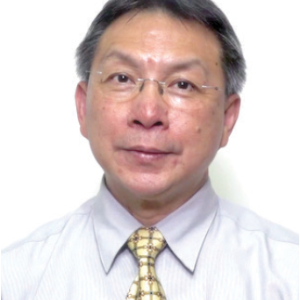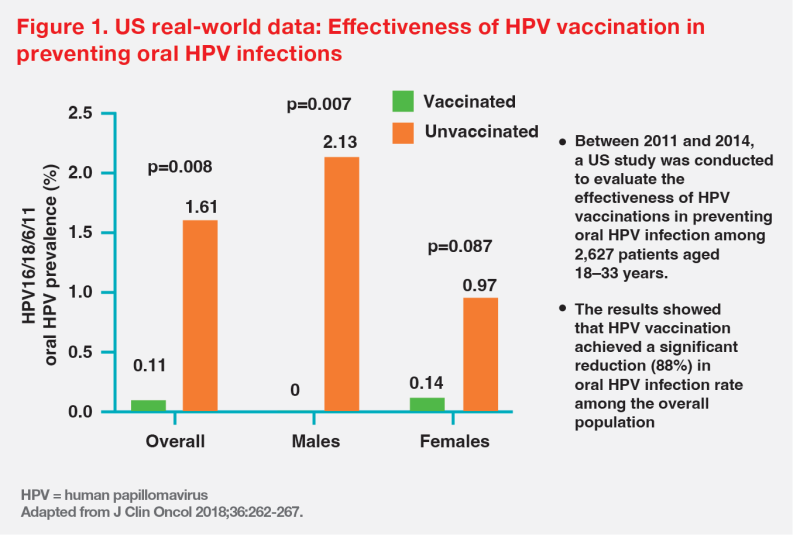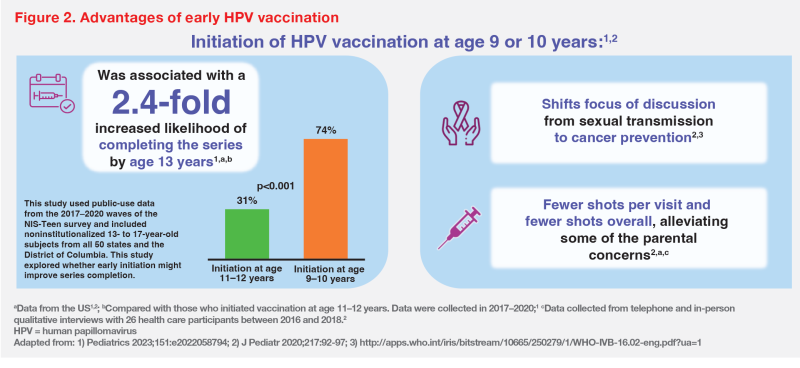Gender-neutral HPV vaccination – an important emerging need













The increasing incidence of human papillomavirus (HPV)–related diseases in males over recent years is turning the spotlight on gender-neutral vaccination (GNV) to prevent HPV-related diseases and cancers in both sexes. Professor Hung-Hsueh Chou from the National Tsing Hua University, Hsinchu, Taiwan, and Dr Mike Yat-Wah Kwan, President of the Asian Society for Pediatric Infectious Diseases (ASPID), and other experts in Hong Kong shared insights on the need for gender-neutral HPV vaccination, as well as possible ways to overcome vaccination barriers and bridge the gender gap.
Oral HPV infection and related cancers higher in men
“Contrary to the misconception that HPV infections mainly affect women, the rates of oral and genital HPV infections are significantly higher in men than women,” said Chou. “According to a US study, the prevalence of oral HPV infection in men is 11.5 percent vs 3.2 percent in women. Similarly, the prevalence of genital HPV is high at approximately 55–70 percent across all age groups in men, while it declines to 15–25 percent in women after reproductive age.” [Ann Intern Med 2017;167:714-724; Cancer Epidemiol Biomarkers Prev 2008;17:2036-2043; JAMA 2007;297:813-819]
OPSCC in men becoming more common than cervical cancer
In the US, oropharyngeal squamous cell carcinoma (OPSCC) in males has surpassed cervical cancer in females as the most common HPV-associated cancer in the overall population since 2009. Globally, in 2020, the annual age-standardized rates (ASRs) of oropharyngeal cancer incidence were 1.8/100,000 men vs 0.4/100,000 women. [MMWR Morb Mortal Wkly Rep 2018;67:918-924; ICO/IARC Information Centre on HPV and Cancer, Human papillomavirus and related diseases in the world, Summary Report 10 March 2023]
Similar increasing trend of HPV-related cancers in HK
“A similar trend of oropharyngeal cancer is seen in Hong Kong, with annual ASR in men being five times higher than in women [1.0 vs 0.2/100,000]. Latest data from the Hong Kong Cancer Registry showed increased incidence over the last 20 years for HPV-attributable cancers of the rectum, lip, oral cavity and pharynx, and genitalia in males,” noted Kwan. A recent study further showed a substantial increase in the proportion of oropharyngeal cancers attributable to high-risk HPV over the past 15 years (cases diagnosed in 2016–2020 vs 2010–2015: OPSCC [all sites combined], 41.9 vs 28.2 percent; tonsil SCC, 64.7 vs 40 percent). [Hong Kong Cancer Registry, Hong Kong Cancer Statistics 2001–2020; Cancers 2024;16:226]
“While smoking- and alcohol-related head and neck cancers have declined, our routine testing for HPV in OPSCC cases showed that 30–40 percent of tonsillar and OPSCC in males are HPV-positive,” said Professor Stephanie Wong from the Division of Otolaryngology, University of Hong Kong. “Change in sexual behaviour could be a reason for this alarming rise, particularly in younger males.”
Need for gender-neutral vaccination
“The increased incidence of HPV-related diseases in men points to the need for a gender-neutral vaccination [GNV] programme in Hong Kong,” stressed Kwan. [ICO/IARC Information Centre on HPV and Cancer, Human papillomavirus and related diseases in the world, Summary Report 10 March 2023; BMC Infect Dis 2010;10:272; BMC Infect Dis 2013;13:39; Cancer Prev Res (Phila) 2012;5:18-23; J Med Virol 2024;96:e29460]
In Australia, the HPV GNV programme launched in 2007 resulted in a significant and ongoing reduction in diagnoses of genital warts in both Australian-born females and heterosexual males, with the greatest magnitude of reduction seen in those aged 15–20 years vs ≥26 years. [Lancet Infect Dis 2021;21:1747-1756]
“A modelling analysis performed for Hong Kong demonstrated the cost-effectiveness of a routine GNV approach [with the 9-valent HPV vaccine], with or without catch-up vaccination. A GNV strategy is projected to remarkably reduce HPV-related disease incidence and reduce costs [by 6.5 percent] compared with a female-only vaccination strategy,” Kwan reported. [Hum Vaccin Immunother 2023;19:2184605]
“In light of all the supportive data, HPV GNV was incorporated into Taiwan’s National Immunization Program in 2025, with the objectives of protecting males from HPV-related diseases as well as accelerating cervical cancer elimination to meet WHO’s global call for action to eliminate cervical cancer by 2030,” shared Chou.
Current evidence on HPV vaccination efficacy
A US population study found that HPV vaccination effectively reduced oral vaccine-type HPV infections by almost 90 percent in vaccinated vs unvaccinated young adults, with significantly greater reduction in males vs females. (Figure 1) [J Clin Oncol 2018;36:262-267]

“Both the 4-valent and 9-valent [containing additional oncogenic types 31/33/45/52/58] HPV vaccines have demonstrated long-term [≥10 years] effectiveness [almost 100 percent] in HPV-related disease/cancer prevention and immunogenicity [≥95 percent seropositivity with 9-valent vaccine] in male and female adolescents and young adults in real-world and long-term follow-up clinical studies,” said Chou. [EClinicalMedicine 2020;23:100401; Pediatrics 2017;140:e20163947; Olssen SE, et al, EUROGIN 2022, abstract 3633; Hum Vaccin Immunother 2024;20:2377903; BMJ Open 2021;11:e050669; J Nat Cancer Inst 2020:djaa209]
High coverage and early vaccination crucial for effective prevention
“Coverage rate is very important in any immunization programme,” stressed Chou. “In England, the incidence of anogenital warts decreased by 82 and 68 percent in females and males, respectively, following a high-coverage [>85 percent] vaccination programme. In the US, where vaccination coverage rate was <50 percent, the corresponding reductions were only 67 and 45 percent, respectively.” [Sex Transm Infect 2019;95:368-373; Sex Transm Dis 2020:47:179-186]
Optimal timing of vaccination at adolescence, prior to sexual debut, is important and recommended by the WHO. The reasons for this recommendation are summarized below and in Figure 2:

HCPs’ role in overcoming vaccination barriers
Recommendations by healthcare providers are reported to increase HPV vaccination uptake and completion (about 10 times higher odds of HPV vaccination initiation and 5 times higher odds of series completion). However, an online survey in 2014– 2015 involving parents of adolescents found that only one-third had received high-quality recommendation from a healthcare provider. [Prev Med 2021;148:106554; Vaccine 2016;34:1187-1192] “Hence, doctors are urged to actively participate in educating adolescents and their parents and encouraging vaccination for cancer prevention,” Kwan recommended.
“Education – through social media, schools, doctors’ advice, public awareness programmes, as well as multilevel collaborations with different stakeholders – are all vital in GNV advocacy, clearing misconceptions, allaying fears and building confidence in vaccine safety,” emphasized Professor Regina Lee from the Nethersole School of Nursing, Chinese University of Hong Kong. “School nurses are instrumental to vaccination programme success, as they can leverage their trusted relationships with school personnel, school children and their parents to educate them effectively.”
“The fact that HPV vaccination has not been shown to change adolescents’ sexual behaviour is an important message for parents to help overcome vaccine hesitancy and let their adolescent children be vaccinated before sexual debut,” added Kwan. [Pediatrics 2018:142:e20180458]
Postexposure vaccination still beneficial
“Evidence has shown that it is not too late to receive HPV vaccination even after sexual or HPV exposure,” assured Chou. A study in sexually active women aged 24–45 years found that postexposure vaccination resulted in 90 percent reduction in persistent HPV6//11/16/18 infection, 94 percent reduction in any-grade cervical intraepithelial neoplasia, and 100 percent reduction in external genital lesions. [Br J Cancer 2011;105:28-37]
“Natural immunity from HPV infection may not provide protection against subsequent infections,” noted Chou. A systematic review of >24,000 individuals found that the risk of subsequent HPV16 and HPV18 infections were reduced by a modest 30–35 percent in females, while HPV antibodies acquired through natural infection provided no protection to males at all. [J Infect Dis 2016;216:1444- 1454; Cancer Epidemiol Biomarkers Prev 2018;27:496-502]
“Postexposure vaccination offers protection for older adults as well, since most adults may not have been exposed to all the HPV types in the 9-valent HPV vaccine,” Chou suggested. [MMWR Morb Mortal Wkly Rep 2019;68:698-702; Papillomavirus Res 2020;10:100202; Clin Infect Dis 2022;74:1247-1256]